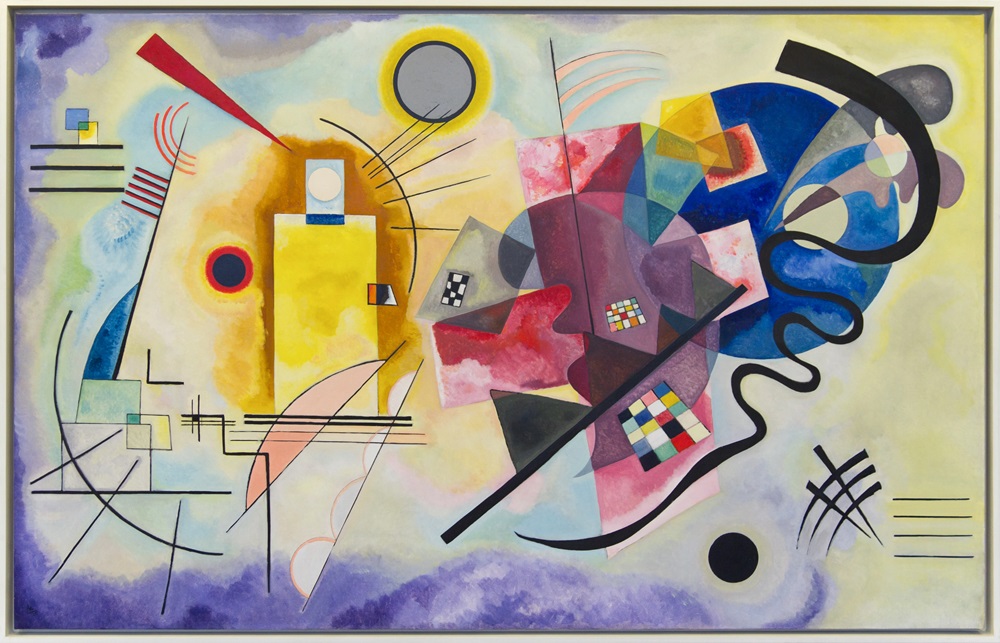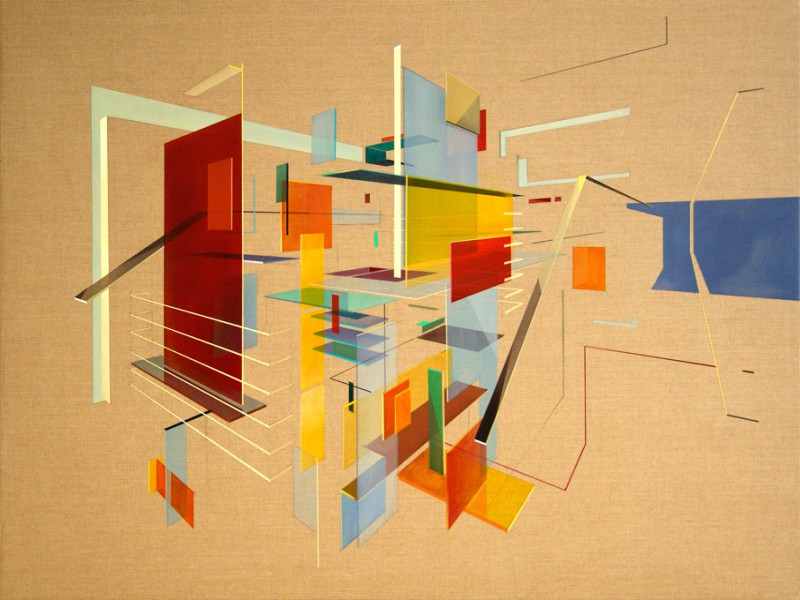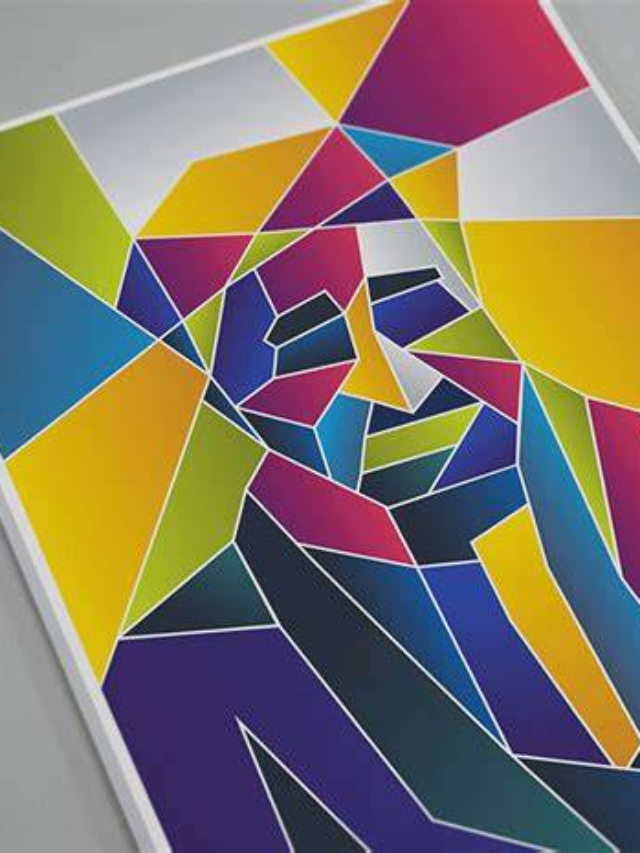Many questions in art remain unresolved forever, as the mystery of geometric abstract art has persisted for millennia. Thus far, what is geometric abstract art? Everything is visible in visual art, and the experience of the visual provides a preview of what is seen. Mathematical understanding and patterns are visually tied to Geometric Abstract Art. Artists use geometric patterns in geometric abstraction to transform natural objects into forms and shapes.
Western art is an intricate concept encompassing various styles and forms due to millennia of interactions between many schools of thinking, practises, intellect, and visual arguments on time and space. Abstract painting takes numerous shapes, so it is possible to develop geometrical styles using technical tools. By dissecting the simplicity of some structural event forms that they have observed in nature during their schooling up to that point, individuals can provide them with a fresh perspective and perception.
The phrase “geometric abstraction” was initially used in 1929 by Alfred H. Barr, an American art historian who was the first to apply it to Wassily Kandinsky’s artwork. Alfred Barr explored the recurring themes in the atmosphere of Western art with ambiguous interpretations of the pieces. Abstract paintings are compositions of geometric or amorphous pictures created by combining form elements—colour, line, figure, mass, and tone—that have no resemblance to any known object.
Through these processes, we perceive and comprehend that the world is more significant than it is said to be. In the social context of art, the artist is the creator, and the creator is the viewer. The universe is opened up via mediated experiences such as artistic practises. A successful piece of art uses the tools and symbols of the known world to represent an unknown realm, expressing a reality beyond actual reality.
Nature of Geometric Abstract Art
As is well known, geometric abstract art frequently falls into this crucial area, defining a form and shape while introducing a fresh interpretation and altering the viewer’s viewpoint of the items. In terms of philosophy, abstract painting generates broad thoughts and meanings and gives its artists greater freedom. The most crucial elements that shape and colour the work are the emotions of the artist who attempts to create a new piece of art while keeping design standards in mind.
Artists never follow the rules or guidelines; even abstract painting concepts that do so challenge the philosophies that shape the world and objects; they also challenge the limitations of multidisciplinary conceptualization phases that employ generic representation languages, which tend to eliminate traditional boundaries between the visual arts, drama, dance, and music.
An abstract work of art stimulates the viewer’s imagination while being non-objective and non-figurative. Nobody can go deeply into a subject without a comprehensive visual understanding. A discrepancy or distortion that produces solid geometric shapes to optical perceptions or logical designs of objects and figures is known as geometric abstraction. These components are intended for usage during the geometric abstracting practice period, one of the art form’s abstraction genres. Essential components of geometric abstraction are these elements. Geometric abstracts feature amorphous shapes created by sharp or smoothed lines, quadrilaterals, triangles, and circular or oval shapes as stylistic elements.

We already know what beauty is, according to Kant: “Beauty is not a property of the work of art but a sensation that comes from the interaction between the subject and the depiction of the object.” Beauty is a “free and harmonious play of imagination and cognition.” What is meant by an object’s representation? Making something perceptible to the senses (but not necessarily understandable) that was not perceptible previously is referred to as making something present that was not present previously. This is regarded as a representation.
The patterns that originated in and are cherished in visual language and mathematical education are essential components of geometric abstract art. The degree to which early 20th-century abstract painters emphasised practical geometry and visual education varied, but this was a unifying theme overall. Appropriate geometry, in the form of Euclidean geometry, constructs for the compass and straightedge, has been an essential part of the instruction of excellent artisans since the early Renaissance.
Do you think that when new languages emerge and languages evolve, so do artistic forms of expression? However, the purpose of art is always the same, and if anyone can grasp the concept of abstraction in any form, then we may comprehend the function of abstraction in other forms of art. Even if their contents vary, the ideas of structure, composition, rhythm, symmetry, regularity, contrast, and syntax are universal.
Assume you are attempting to create an abstract painting. In that scenario, like any other painting, abstract painting involves constant values; therefore, you need to be extra cautious when dividing up specific fundamental ideas like space, composition, and place. Abstraction allows one to defy time and space while adhering to the theories and philosophies that further enhance their allure.
Types of Geometric Abstraction
The main abstract art movement that emerged in reaction to Russia’s economic and cultural transformation was constructivism, which was incorporated into propaganda and commercial advertisements. El Lissitzky created the most well-known poster, “Beat the Whites with the Red Wedge.” Tatlin’s Tower is one example of architecture influenced by constructivism, as were films like Aelita and Storm over Asia. Constructivist painters included, among others, El Lissitzky, Vasiliy Yermilov, Vladimir Tatlin, and Lyubov Popova.
Theo van Doesburg founded the Stijl, which translates as “The Style” in Dutch, in 1917. Notable participants included the architects Gerrit Rietveld, Robert van ‘t Hoff, and J. J. P. Oud and artists Piet Mondrian, Vilmos Huszár, and Bart van der Leck. The fundamental colours of red, blue, yellow, black, and white were employed in the paintings, which were portrayed using rectangular grids. 1940 saw the introduction of the abstractionist movement to the United States of America through Mondrian’s final painting, Broadway Boogie-Woogie.
In 1960, minimalism emerged as a fresh artistic movement in New York. The goal was to convey clarity by stripping the text of any references and returning it to its most basic form. Tony Smith’s “Die” is among the most significant works of art influenced by this genre.
Conclusion
The audience typically sees a glimpse of the artist’s previous work in geometric abstraction, which is more accessible than visually observable; the most crucial step in geometric abstraction is removing details. Without details, no geometrized shape is created. You may think of an image as a sign composed of signs. The time needed to perceive a fixed image consists of the time required to interpret the image as a sign and the time necessary to solve the individual signs that comprise the image. The first is almost instantaneous and worldwide, while the second depends on how complicated the image is.






